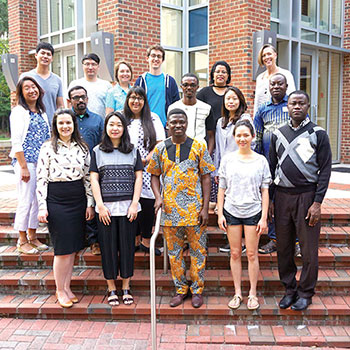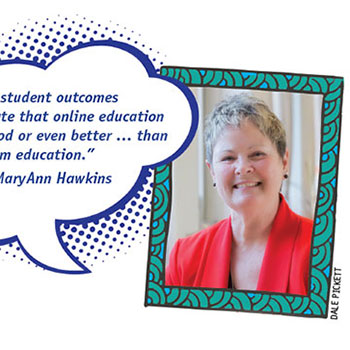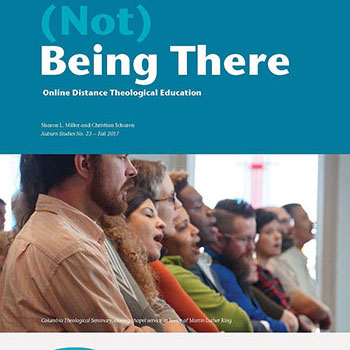
The In Trust Center for Theological Schools, the parent organization of In Trust magazine, was established five years ago to broaden the organizational focus beyond governance through engaging in Resource Consulting. The methodology of Resource Consulting was adapted from the Center for Congregations, an organization that serves more than 4,000 religious congregations in Indiana by connecting them with resources to support their mission.
In How Your Congregation Learns, Tim Shapiro, president of the Center for Congregations, reflects on how churches can become learning organizations, adapting to unforeseen challenges and opportunities. While Shapiro refers specifically to congregations, much of what he writes can be applied to theological schools as well.
Q: You write that as a congregation attempts to either address a problem or achieve new things, it will go on a “learning journey.” Why is it important to think about the institutional learning process?
A: When congregations do something new, there’s a discernible pattern. If they become conscious of that journey, it reduces anxiety and increases their ability to take control over the learning process.
The “learning” piece is important because I think organizations should go into new endeavors with the understanding that they don’t have all the information, training, or education that they need to accomplish what they set out to do. That acknowledgment normalizes the inevitable sense of being overwhelmed and the disappointment that occurs along the way.
In terms of the “journey” aspect of it — if people are aware that there are typical patterns that the congregation experiences, such as defining the challenge, the time of exploration, and so forth, the organization can then have more agency over the process. It’s happening whether they’re aware of it or not, but by becoming aware of it they have the ability to say, “We really need to move to a time of exploration and learn from others out there before we rush too quickly into creating the plan for tactics and implementation.”
Q: How does engaging an outside resource affect a congregation’s learning process?
A: Let’s give an example. Say a congregation has a new pastor who has been there for a year. The board is excited. It’s a good fit. Attendance is up. Things feel much more solid than three years ago when the transition was beginning. So the board and the pastor are seeking to undergo a strategic planning process.
In the scenario I’m describing, if they reach out to an outside resource, they’re going to take the gifts that this outside resource is offering and adapt them to their particular context.
This outside resource creates some objectivity; it creates new ideas that maybe didn’t exist before. It allows someone who has more expertise, or at least experience, to help them minimize the number of mistakes that will inevitably be made.
Q: What do you want our readers — leaders and other stakeholders in theological education — to know about your experiences in working with congregations?
A: The congregational leaders that we work with carry their theological education with them, whether they’ve been out of school for two years or for 30 years. The relationships they’ve had with professors, the curriculum from which they learned, the books on their shelves, are all signs of what they carry in their heart about their faith and what’s most important to them. So, every day the value of theological education is represented in the leadership of the congregations that our Center serves.
In addition, congregations are always going to be facing opportunities and challenges that are just beyond their capacity. If there’s something about theological education that can help future leaders normalize, be prepared for, and even diagnose that reality, that would benefit congregations.
This interview was edited by Matt Forster. Read a longer version at www.intrust.org/news-insights/the-gift-of-a-learning-community/.
An excerpt from How Your Congregation Learns
Editor’s note: Shapiro makes reference to “congregations,” but the stages of a learning journey may apply to theological schools and other organizations as well. The following is an abridgement of Chapter 1, “The Journey: Patterns and Behaviors.”
Congregations that learn new behaviors go on a discernible learning journey. An identifiable model can be observed in congregations that learn to do new things well.
Educator Robert Kegan notes the difference between education and training. Training is an informational stance. It leaves your view of the world essentially the same. Education is different. It changes the essential nature of who you are. Education is what leads to transformation.
If your congregation wants to extend itself to address a challenge that is currently just beyond its capacity to handle, then education is needed. Such challenges require growth in you and in those with whom you experience life together in your faith community. You and I can be trained to create a budget but we need to be educated to be generous. We can be trained to interpret scripture, but we need to be educated to practice our faith.
Defining the task of a new endeavor in your congregation as a “learning journey” reinforces the reality that life is a school from which none of us graduate.
After observing congregations learning about many different challenges, I have witnessed a pattern in congregations that accomplished what they set out to do.




























